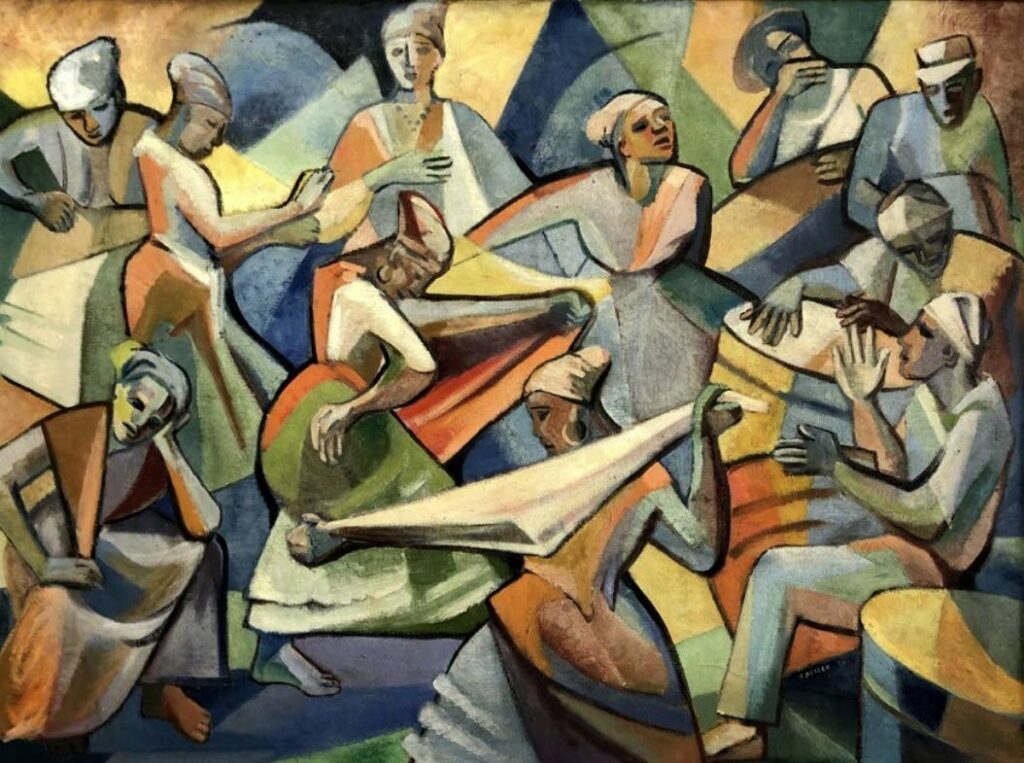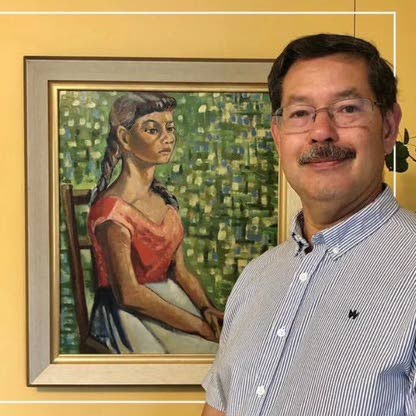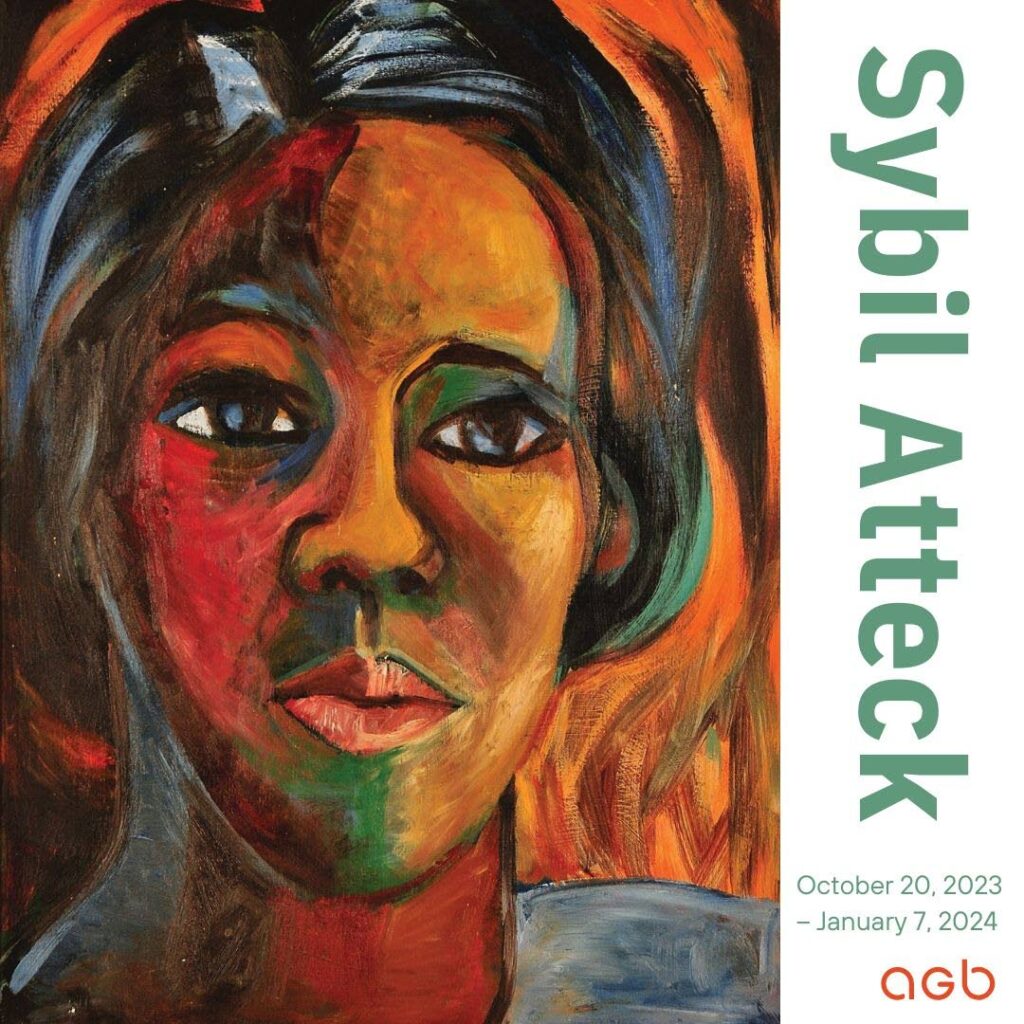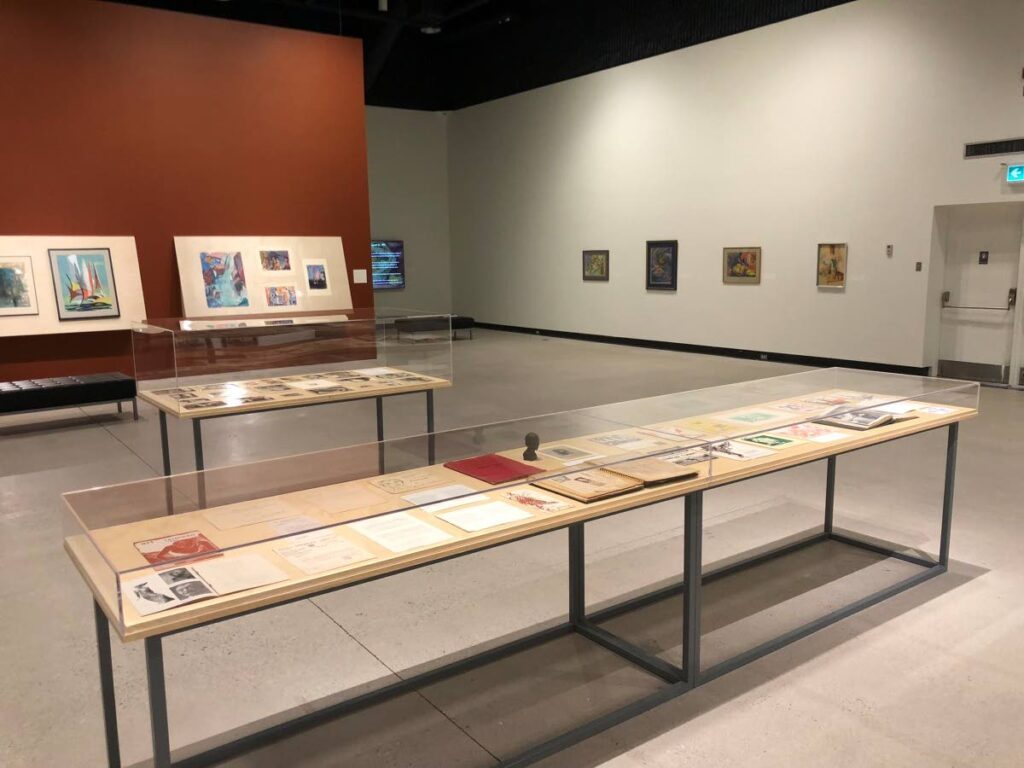Legacy of Sybil Atteck unveiled at Canadian gallery

At a time when women were expected to get married, have children and take care of a home, the late Trinidadian artist Sybil Atteck decided to instead pursue her passion and became one of the few professional artists in Trinidad and Tobago.
Atteck’s work, collected and catalogued by her nephew Keith Atteck, is on display at The Art Gallery of Burlington in Canada until January 7, 2024 in the exhibition titled Sybil Atteck: A Legacy Unveiled.
“You can imagine the journey to becoming a professional artist in the 1930s, 40s, 50s, when there was no professional artists in Trinidad, where women were not expected to do that kind of role or job. The expectations of a young woman in those days were very different than it is today. So she was breaking through social and economic barriers in order to take on something that was her passion,” said Keith about his aunt.

He noted that Atteck never married or had children but pursued art from the time she left secondary school. She received the Chaconia Medal (gold) in 1973 but was too ill to accept it personally. She eventually died of cancer in 1975.
Sybil Atteck: A Legacy Unveiled has more than 40 pieces of Atteck’s art as well as artifacts such as sketches, letters, photographs, and catalogues.
“The self-portrait that is featured as the hero painting of this exhibition of Sybil from 1973 was her last self-portrait. It was her leaving herself, essentially, for the people of TT to see.”
He said the exhibition was limited to the chosen pieces as he and the curator did not want the audience to feel overwhelmed. However, they wanted to represent the various styles and media Atteck used including still life, portrait and landscape drawings, sculpture and paintings in post-impressionist, modernism and cubism styles using ceramic, watercolour, oils, acrylic, crayons, black and whites, with ink wash, pen and pencil, and more.
“She made a point in several newspaper articles about art being a language where we vocalise things. In terms of how she evolved as a person and an artist in her lifetime, I have managed to come up with ten different artistic periods in her life. And they were influenced greatly by her own personal experience, the education and training that she had and her explorations as an artist through time.

“I can track her evolution. I could see that she was continuously exploring, she never stopped exploring, what art can be and she also changed media throughout her life.”
Keith’s deep dive into Atteck’s work began in 2018 when his mother and Atteck’s sister-in-law, Helen Atteck, invited him to her home to figure out the authenticity of a painting said to be by Atteck.

“I came to a realisation that she (Helen) was 84 years old. And I'm saying to myself, ‘If I'm going to be the family member to represent Atteck’s estate going forward, I had better do something about it,’ because I could not identify and authenticate and describe Sybil’s artworks to anybody at that point in time.”
Living in Burlington, Canada, Keith started researching Atteck’s story and her art as well as his family’s history in TT. He spoke to his mother extensively about both and used her stories to validate the information through research.
He said his parents had done research into the family history from China to Trinidad. Therefore he documented the moment his great-grandfather arrived in TT in 1862 as an indentured labourer through the generations to Atteck.

“So the idea being is Sybil is not just an artist. She didn't come out of nowhere. She came out of the history of Trinidad's Chinese indentured labour programme through her grandfather and then into cocoa.”
He learned Atteck was born in Tableland but, when she was about 18 months old, the family moved to Rio Claro where her father had a cocoa estate. When she was 12 years old, her parents decided to stop homeschooling their eldest children and moved to Port of Spain where Atteck attended St Rose's Intermediate School then Bishop Anstey Girls’ High School.
He told Sunday Newsday the Atteck’s five eldest girls were introduced to art by their mother who also wanted to be an artist ,but got married and had 11 children which changed the course of her life. The girls all pursued art although Sybil Atteck became the most successful.
Atteck’s first job was as cartographer and botanical illustrator at the Ministry of Agriculture’s botanical department from 1930 to 1942. And in 1931 she became one of the first female members of the Trinidad Field Naturalists Club which was reflected by her realistic art of flora at that time.
He explained that her eldest sister, Olive Atteck, fell in love with and married a British doctor who was a professor at the Imperial College and her boss. The scandal of the interracial marriage led him to losing his job in Trinidad.
In an attempt to get Olive away from the scandal, the doctor sent Olive to London to study and, in 1935, Atteck went with her to study art at the Regent Street Polytechnic. The doctor eventually got work in Brazil and Peru and, in 1941, Atteck also went to Peru to study art at the Escuela de Bellas Artes in Lima. Then in 1948 she travelled to the US where she attended the School of Fine Arts at Washington University and obtained a Bachelor of Fine Arts degree.
Between her bouts of study, she returned to TT where she worked, painted and involved herself in TT’s art community. So much so that in 1943 she founded the Trinidad Art Society, which eventually became the Art Society of TT.
“From the time she finished school she wanted to study art but, of course, there was nowhere to study in Trinidad. There was no facility to do so. So it was through these experiences of travelling abroad that she had a chance to actually get some professional art training or academic training.
“And eventually, she saved up enough money from her work at the Ministry of Agriculture to be able to afford to travel to St Louis, Missouri, where she went to Washington University to study and get her Bachelor of Fine Arts, which she did in three years. A four year degree was done in three years!”
When Atteck returned to TT, she taught art at five different girl’s secondary schools from 1948-1974. And her income from being a professional artist allowed the family to buy a piece of land and build a house in Valsayn in 1968.
Keith recalled he and his parents lived near to Atteck, her mother and brother in Valsayn and he spent a lot of time at their home. He described Atteck as “loving and pleasant” and recalled that she would often be in her studio.
He said she tried to encourage him to paint or draw but he preferred to play sports. But even as she failed to get him to pursue art, she influenced him artistically.
He recalled a time, before he and his family left TT for Canada in 1972, in primary school during art class when he was put to sit in front of an easel and told to paint something. He had never painted before but he remembered watching Atteck paint a scene of the Caroni Swamp.
Since he had visited the swamp as well, he decided to paint it recalling the process he had seen from his aunt. The next day he saw his painting had won the first prize.
“It's a nice memory that how she influenced me even though I wasn't pursuing fine art. In a way I learned something from her just by the memory of what I saw her doing. And if you think about this project, so many years later, she's influencing me again, because I'm learning about, not only her art, but the whole art history of Trinidad.”
Atteck was also a mentor to many. Keith said her students described her as gentle and encouraging, patient and generous with her knowledge. He also discovered that, while living in Port of Spain, the Atteck house was often filled with budding artists and Atteck and her sisters were part of a community of artists.
Keith said during his visits to TT in 2000 and 2023 to do research, he found several pieces of Atteck’s work in private collections and he was certain there were more. That was in addition to her murals in the lobby of the Hilton Trinidad and Conference Centre, at St Theresa’s Roman Catholic Church, Malick, and the Fernandes Industrial Complex.
He hopes to, some day, have a second exhibit of his aunt’s work in TT using locally sourced pieces. In addition, since his research is complete, he is exploring ways to publish Atteck’s biography and art catalogue.

Comments
"Legacy of Sybil Atteck unveiled at Canadian gallery"